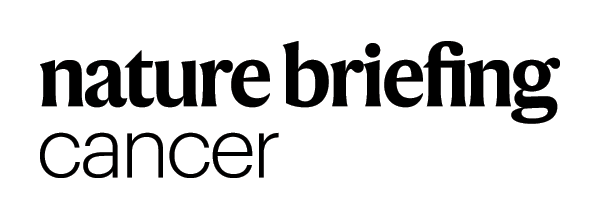| |||||
| |||||
| Hello Nature readers, | |||||
 | |||||
| Extrachromosomal DNA is seen in many types of cancer. (Animated Healthcare Limited/Science Photo Library) | |||||
Research Analysis | |||||
Circular DNA might trigger cancerThe existence of loops of DNA outside the chromosomes can precede, and even promote, cancer. Extrachromosomal DNA was thought to be a by-product of cancer, so was not thought to exist in healthy tissue. However, in a study of 226 people, researchers found extrachromosomal DNA in tissue predisposed to cancer, and also found evidence that it was driving cancer development. The study focused on people with a condition called Barrett's oesophagus, in which the identity of cells lining the gullet changes as a result of acid reflux, sometimes leading to cancer. Nature News & Views | 6 min readReference: Nature paper (12 April) | |||||
 | |||||
| Extrachromosomal DNA has been spotted in cells with high-grade dysplasia, which are abnormalities that can turn into cancer. | |||||
| |||||
Cancer leader set to take top NIH jobThe White House is poised to nominate Monica Bertagnolli, the current head of the US National Cancer Institute, as the next leader of the US National Institutes of Health (NIH). If confirmed by the US Senate, Bertagnolli will take charge of the organization's US$47-billion budget, filling a leadership position that has been vacant since geneticist Francis Collins stepped down in December 2021. Bertagnolli is a visionary leader, says clinician and researcher Lawrence Shulman. "It's like a chess game, she's always thinking several steps ahead." Nature | 3 min read | |||||
Devils' contagious cancer sequencedThe facial tumours that have ravaged the population of Tasmanian devils in Australia have been sequenced for the first time. Researchers used more than 100 tumour samples to construct a cancer family tree dating back to 1986, when the first case occurred. They showed that a second type of facial tumour emerged in 2011 in a small region of the island of Tasmania. Unlike most cancers, the devils' facial tumours are contagious. Cancerous cells pass from one carnivorous marsupial to the next through biting and lead to mouth sores that result in starvation. Nature | 3 min readReference: Science paper (20 April) | |||||
'Democracy in microscopy'Using techniques that seem to defy the laws of optics, researchers have developed a low-cost, high-resolution light microscope that rivals the most expensive lab equipment in performance. The technique, called ONE microscopy, involves expanding tissue using an absorbent compound and focusing on fluorescent molecules attached to proteins. Using existing optical methods, objects become blurry at around 200 nanometres. The new technique has a resolution of 1 nanometre, matching that of expensive methods such as cryo-electron microscopy or X-ray crystallography. "There should be some form of democracy in microscopy. It's high resolution for the many, not the few rich labs," says nanoscale specialist Silvio Rizzoli, who pioneered the technique. Nature | 4 min readReference: Preprint at bioRxiv (10 March) | |||||
 | |||||
| The resolution of the protein tubulin is low when existing optical microscopy methods are used (left) but rich in detail using the new ONE microscopy technique (right). (Ali Shaib et al./bioRxiv (CC-BY-NC-ND 4.0)) | |||||
| |||||
The solid-tumour treatment in bloodResearchers have invented a method for extracting tumour-infiltrating lymphocytes (TILs) from the blood of mice with solid tumours. TILs are rare, making up as little as 0.002% of peripheral T-cell populations. Researchers isolated these precious cancer-fighting immune cells using tiny channels (microfluidics) and magnetic nanoparticle tags (immunomagnetics). TIL therapy usually involves extracting immune cells from tumours, replicating them in the lab and infusing them back into the body. The ability to extract TILs from the blood could help to make TIL therapy accessible to people whose tumours cannot be surgically removed to harvest TILs. Reference: Nature Biomedical Engineering paper (10 April) | |||||
 | |||||
ACCESS NATURE AND 54 OTHER NATURE JOURNALS Nature+ gives you immediate online access to Nature and 54 other journals. Nature+ is a flexible monthly subscription and is currently available only to personal users in the United States and in the United Kingdom. | |||||
| |||||
 | |||||
| Rodent studies in the mid-twentieth century raised the intriguing possibility that stress, distress or psychiatric disorders could contribute to the growth of cancers. Decades later, the 'neural addiction of cancer' is an emerging field of research. We now know that tumours "develop a long-distance relationship with the brain… to promote cancer initiation, growth and dissemination", write biomedical scientists Claire Magnon and Hubert Hondermarck. (Nature Reviews Cancer | 41 min read) Click to view the figure full-size in the paper. (C.Magnon & H.Hondermarck/Nat Rev Cancer) | |||||
Quote of the week"The steadfast FDA policy of disavowing any… concern for the cost of considered therapies offers no incentive… to fulfil an unmet need."The US Food and Drug Administration (FDA) doesn't take cost into account when approving cancer drugs, which drives up the price of treatments, argue oncologists Aakash Desai, Caleb Smith and Howard Jack West. (Nature Reviews Clinical Oncology | 7 min read) | |||||
| | |||||
| |||||
| | |||||
| |||||
| You received this newsletter because you subscribed with the email address: gustavo.braslavsky@gmail.com Please add briefing@nature.com to your address book. Enjoying this newsletter? You can use this form to recommend it to a friend or colleague — thank you! Had enough? Unsubscribe from Nature Briefing: Cancer. Fancy a bit of a read? View our privacy policy. Forwarded by a friend? Get the Briefing straight to your inbox: subscribe for free. Get more from Nature: Register for free on nature.com to sign up for other newsletters specific to your field and email alerts from Nature Research journals. Nature | The Springer Nature Campus, 4 Crinan Street, London, N1 9XW, United Kingdom Nature Research, part of Springer Nature. |
Cancer leader tipped to take top NIH job
Subscribe to:
Post Comments (Atom)

No comments:
Post a Comment